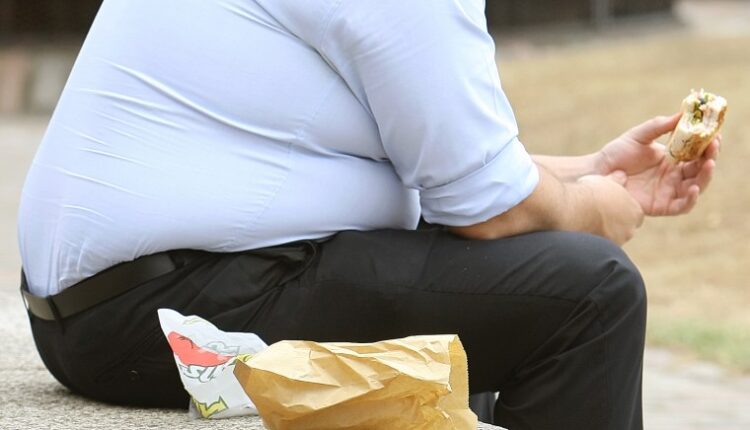Body Weight and Back Pain: The Facts and What to Do
Research has shown that there is a relationship between obesity and developing degenerative arthritis, and spine degeneration due to mechanical and inflammatory factors.
Weight loss is thought to improve chronic low back pain by reducing harmful excess load on the spine and biomechanics. It is also known that weight loss can alleviate musculoskeletal pain in the morbidly obese.
But we wanted to take a closer look at the research showing exactly what changes people with pain experienced when they lost weight.
A study of people with near-daily chronic musculoskeletal pain that interfered with daily activities included those with some combination of the following painful body parts: low back, hips, knees, ankles, and feet.
The diagnoses included mechanical pain, sciatica, patellofemoral chondromalacia, degenerative arthritis, tibiofemoral arthritis, ligamentous laxity, metatarsalgia, and plantar fasciitis.
At the start of the study, the average weight of participants was 277 pounds. At the end of the study, the average weight loss was 97 pounds, with the least being 35 pounds of lost weight.
The study concluded that “after losing weight, 89% of patients had complete relief of pain in one or more joints.” What’s more, those who lost a moderate amount of weight (i.e., less than 60 pounds) experienced the same relief as those who lost more than 99 pounds. Interestingly, those who regained the weight noted a return of the pain.
One study concluded that body weight is a possible risk factor for causing low back pain, but still could not determine whether it is the true cause of low back pain. However, another study found associations between weight loss and reduced pain in the elbow, upper back, lower back, and hip regions as well as overall pain.
One study even examined the effect of weight loss on disc space height between the vertebrae in people with back pain radiating down into their legs. They found that an average weight loss of 81 pounds in morbidly obese people resulted in significant pain reduction in the back and legs as well as a 2mm increase in disc space height. This is big! Increased disc space height could mean that nerve impingement or pinching could be reduced, disc protrusion or bulge may be eased, and may lessen inflammation in that part of the spine.
It has also been shown that weight loss not only reduces the frequency and intensity of back pain, but also reduces the doses of medication required.
Another study found that function also improved along with reduced pain when people with obesity lost weight. There are numerous studies showing that weight reduction can result in improvements in pain and function. One explanation is that weight loss reduces the biomechanical stress on load-bearing joints, thus reducing pain.
Perhaps you have pain and are surprised at how much decreasing your weight may help. What are the best next steps?
-
- Check in with your doctor. Before making significant changes, be sure to discuss with your primary medical provider to determine if weight loss is appropriate for you, and to ensure a safe and healthy approach to weight loss.
-
- Weigh yourself. Any time we make lifestyle or behavior changes, it is helpful to track our progress.
-
- Set a goal. Be realistic with your goal and timeframe. Also, be compassionate with yourself – body pains may be one of the main reasons you gained weight. It’s because of pain that physical activity gets avoided, but when eating habits don’t change to match, we end up gaining weight and losing strength. Think about how much you’d like to weigh to feel more comfortable physically, improve your functioning, or to improve other health conditions, like diabetes or high blood pressure.
-
- Consider your options. There are many ways weight loss can be achieved. Some use caloric restriction, others intermittent fasting, while others focus on replacing usual meals with healthier alternatives and portion control. The anti-inflammatory diet is also becoming popular due to its relationship with pain.
-
- Incorporate movement. Our eating habits are the primary contributor to our body weight, but activity helps us get there and is important for pain management. With body aches and pains, it is hard to be consistent with physical activity, so consider small, doable activity goals just get into the habit (for example, walking 5-10 minutes daily or 30 minutes of floor exercises every other day).
-
- Commit. If you are preparing to make lifestyle changes, it is important to set a realistic and achievable goal, outline the plan, and finally commit to it.
-
- Broadcast your plan. Post your plan on the fridge, on your mirror, and/or tell a caring friend or family member. We are more likely to meet our goals when we are reminded of them and held accountable. Also, talking to loved ones about why you want to make changes can help them learn that losing weight may improve your pain, so they can support your efforts to make healthier choices.
-
- Seek additional support as needed. It’s okay to ask for help, enlist an accountability buddy for evening walks, or join a weight loss program or community.
- Start. Taking action is often the hardest part. Make the first step a small, manageable one. For example, replace one snack per day with an alternate snack, or eliminate sodas for one week. You decide what step is right for you.
Losing weight can be challenging for anyone and even more so when dealing with musculoskeletal pain. There are so many different approaches we can use to better manage chronic pain; losing weight is just one. A combined approach usually is best, incorporating regular movement, healthy eating, stress management, and pacing activities.



